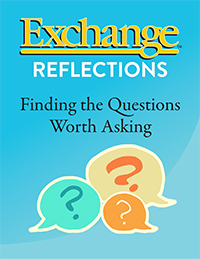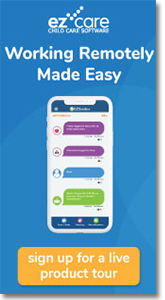ExchangeEveryDay Past Issues
 << Previous Issue
| View Past Issues | | Next Issue >>
<< Previous Issue
| View Past Issues | | Next Issue >> -Carrie Brownstein
“Studies show that children who are significantly more interested in new things show superior cognitive skills, indicating that curiosity correlates to learning and intelligence,” writes Wendy Ostroff, in an article that forms the basis for the newest Exchange Reflections, “Neuroscience of Curiosity.” The author explains that classrooms that maximize novelty help children become more curious.
Ostroff includes multiple ideas to discuss about ways to increase novelty in classrooms. Here are just a couple:
- Model using materials in new ways (e.g., stacking cans, hiding things in boxes, placing items of interest low and high); use common objects (such as aluminum foil, found objects and loose parts) for both new artistic and new functional purposes.
- Know when to throw out the schedule and let the structure be driven by authentic opportunities (e.g. when children get deeply engaged in something or when something exciting happens, such as an unexpected snowfall).
Want to join an Exchange Reflections discussion group to experience how it is facilitated by our Dimensions Foundation education specialists, and to meet people from around the nation? Here is the next opportunity: Reflections Discussion: Arts and Nature, September 28.
 |





Post a Comment